Why Sandra Gering Closed Her Gallery to Take On an Even More Ambitious Project: Reaching Nirvana
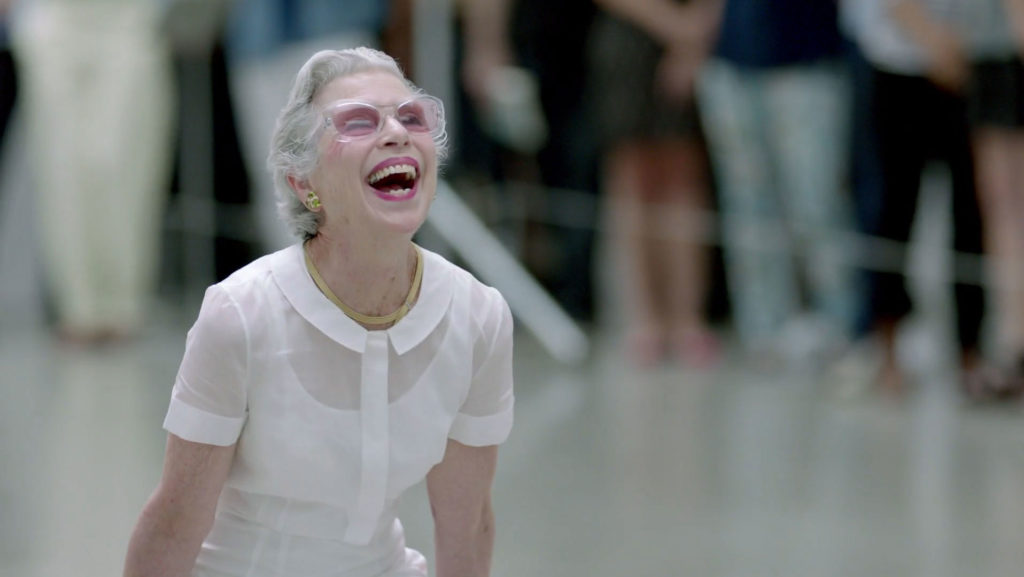

Taylor Dafoe

Sandra Gering is one of New York’s longest-tenured and most-respected dealers. A slight, graceful woman with a taste for high fashion, she is known for her ability to spot young artists with star potential. She represented many such names early on, bolstering the careers of artists like Janine Antoni, KAWS, and Leo Villareal.
“I never studied art,” Gering tells artnet News. “I just have a gift to be able to see 10 to 20 years ahead.”
Last summer, after more than 25 years in operation, the venerable gallerist closed her brick-and-mortar space. But unlike other gallery closings, the decision wasn’t motivated by finances (the gallery was doing as well as it ever had) or real estate, nor was Gering retiring per se (she still works, though not as much as she once did). Instead, she wanted to refocus her time on other, more spiritual aspects of her life.
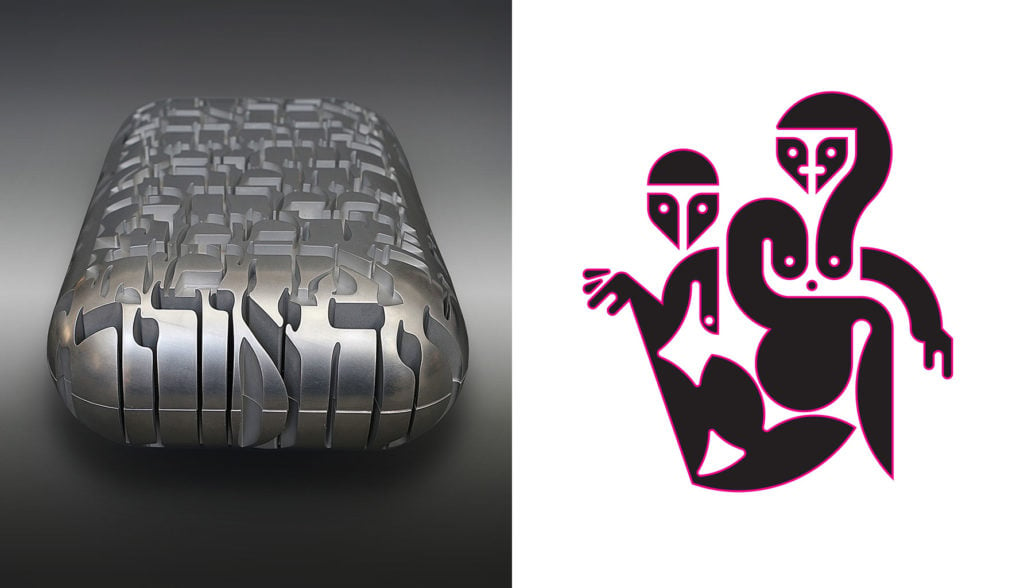
Left: Tablets created by Ghiora Aharoni for the Tikunei haZohar. Right: A drawing by Ryan McGinness for the book. Courtesy of Sandra Gering Inc.
Today, at age 75, she is as active as ever. A practitioner of yoga for more than 50 years, she stands on her head “every single morning, no matter what.” In 2013, she appeared in Jay-Z’s “Picasso Baby” music video, dancing with the energy of a young child while an impressive mishmash of art world cognoscenti looked on.
And now she’s in the throes of what, for her, is her most important undertaking yet: a special edition of the Tikunei haZohar—a 4,000-year-old kabbalist text, written in Aramaic, about the 70 corrections that a soul must make before they reach nirvana.
What’s more, she tapped some of her closest artist friends to help out. The manuscript will be encased by two interlocking tablets created by artist and designer Ghiora Aharoni. Underneath the text will be a drawing done by Ryan McGinness. And Leo Villareal, one of the many major artists Gering helped lift to fame, created the cover, a tree of light illuminated by 70 small LEDs—one for each correction.
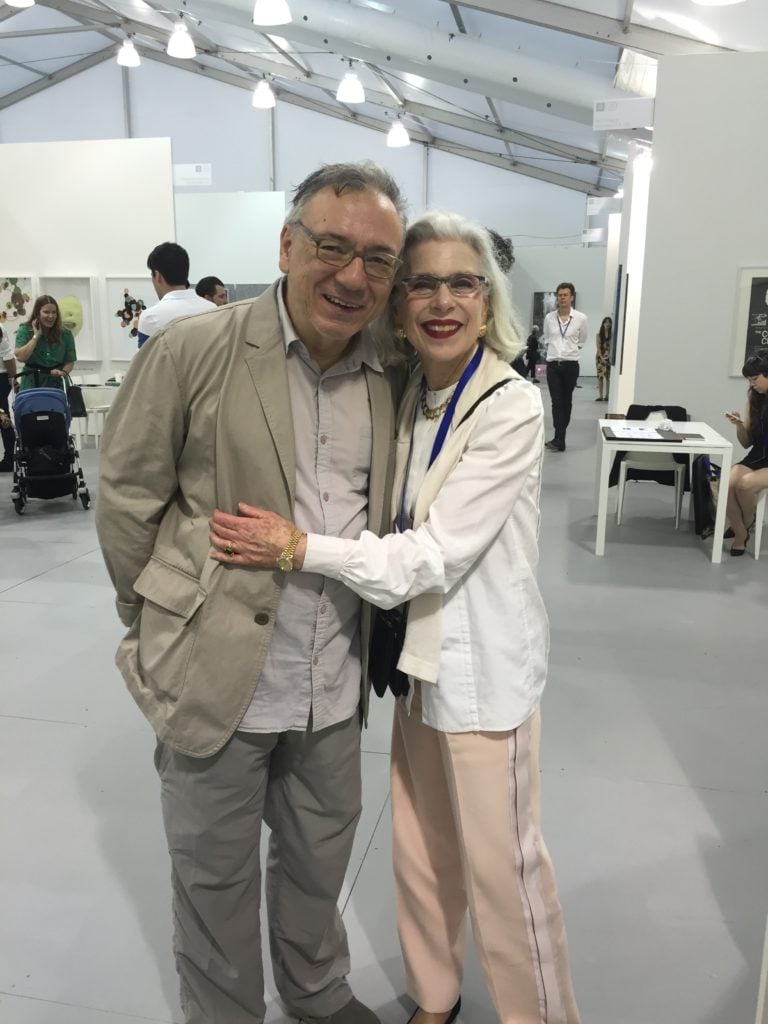
Sandra Gering and artist Peter Halley in Miami, 2015. Courtesy of Sandra Gering Inc.
The book, set to be produced within the next year, will be an edition of four and is dedicated to women around the world. One has already been accepted into the collection at the Morgan Library and Museum in Manhattan. Gering hopes to place the other three with the Louvre Abu Dhabi, the Ethnological Museum at the Vatican, and the Israel Museum in Jerusalem.
“I want it to be about plurality of religion,” she explains. “And that we’re all the same soul and that we all need to reach this particular point, and do the work that we are supposed to do on this earth.”
Gering, who was raised Jewish but never identified with the ritualistic side of the religion, has long identified as a spiritual person. She realized it at an early age.
“When I was three, I had a dream that I had to bring all peoples together,” she says. “I was on a beach alone, and from that time on, I was I felt that I was connected to some universal force. Throughout my life, I’ve always listened and done what my heart tells me to do.”
That’s what makes the Tikunei haZohar project—a first-class artist’s book, essentially—so special. It perfectly symbolizes Gering’s achievements in the two most important facets of her life: art and spiritualism.
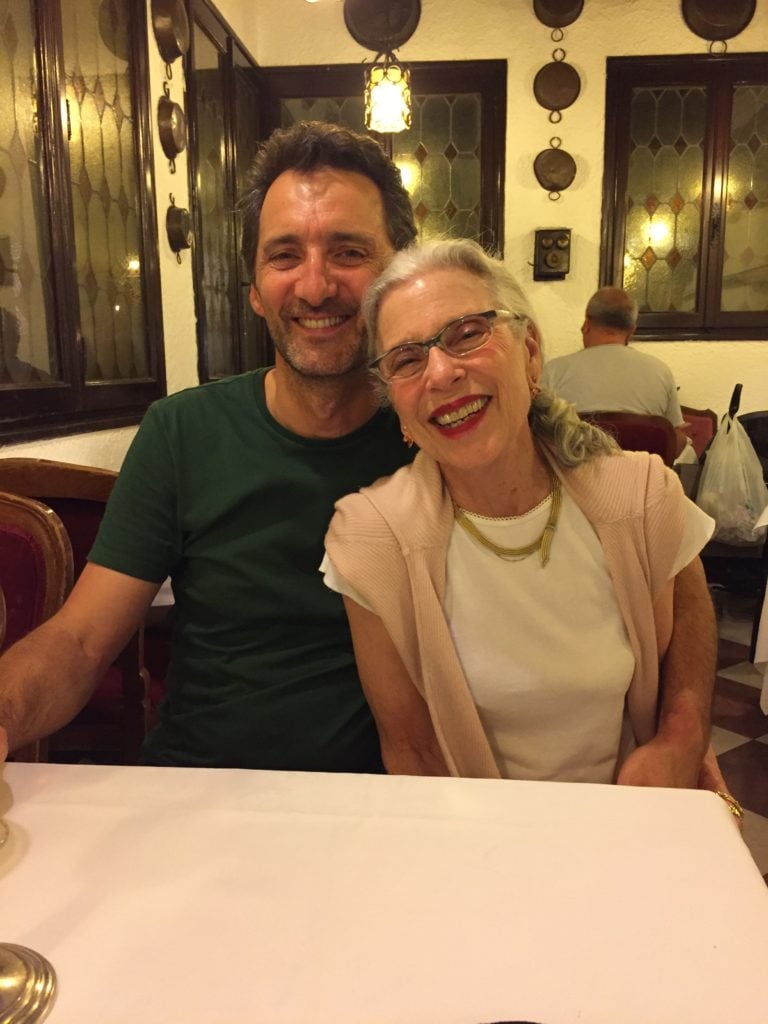
Sandra Gering and artist Xavier Veilhan in Venice, 2017. Courtesy of Sandra Gering Inc.
Gering was born and raised outside of Washington, D.C. At the behest of her father, she went to college to become a dental hygienist and worked in the field for a several years before meeting her husband, having two children, and moving to Long Island to be a full-time mother. After her children left for college, she divorced her husband and moved to New York, settling in a Greenwich Village brownstone. There she befriended a number of artists, including John Cage and Merce Cunningham and began hosting exhibitions in her home, including shows by Dove Bradshaw and William Anastasi.
To open up her first gallery space, Gering convinced her divorce attorney to consign with her a Picasso painting he owned. She took the money from the sale to open up her first gallery space in Soho, agreeing to renovate the place in exchange for a year’s worth of free rent.
She relocated to Chelsea in the early 2000s, and then to the Midtown in 2006 when she partnered with dealer Javier López and rebranded the business as Gering & López Gallery. The duo disbanded their partnership in 2013, and Gering moved uptown under the name Sandra Gering Inc. She remained there until deciding to close the space for good in 2017.
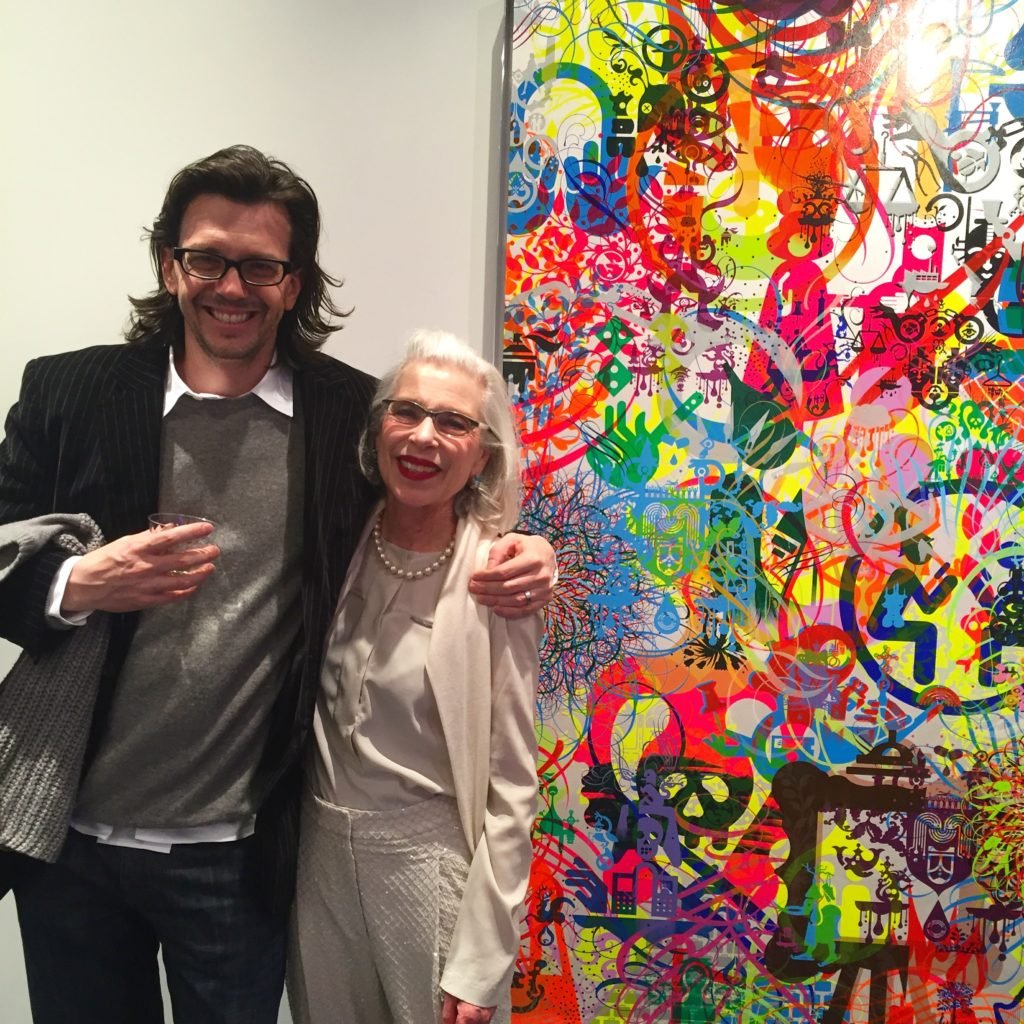
Sandra Gering and Ryan McGinness, April 2016. Courtesy of Sandra Gering Inc.
Gering looks back at her gallery’s run the way an empty nest parent looks back at their firstborn’s childhood years. She affectionately recalls even the weirdest of her gallery’s shows—from a massive pile of dirt that once occupied her living room floor (a work by Antoni) to an exhibition of smoked fish installed in vitrines. (One morning, she came into the gallery to find that whole show had been eaten by rats.)
“Those were the times it was fun,” Gering recalls, laughing. “I’m telling you, I had so much fun. It’s not like that anymore, not like it was then. The art world is very different now. It’s not as fun.”
And yet, despite the many artists she supported and successful shows she mounted, perhaps the single most important testament to Gering’s success was the stability she brought—a rare feat in an art world known for its volatility.
“Not once in all of those years was rent not paid,” she says. “Everything was always covered. I still can’t believe it myself.”
That stability made the decision to close her public gallery space even harder. But it was one she felt she had to make.
“I had been thinking about it for a while,” Gering explains. “It was my intention to finish on top rather than wait until I had to close.”
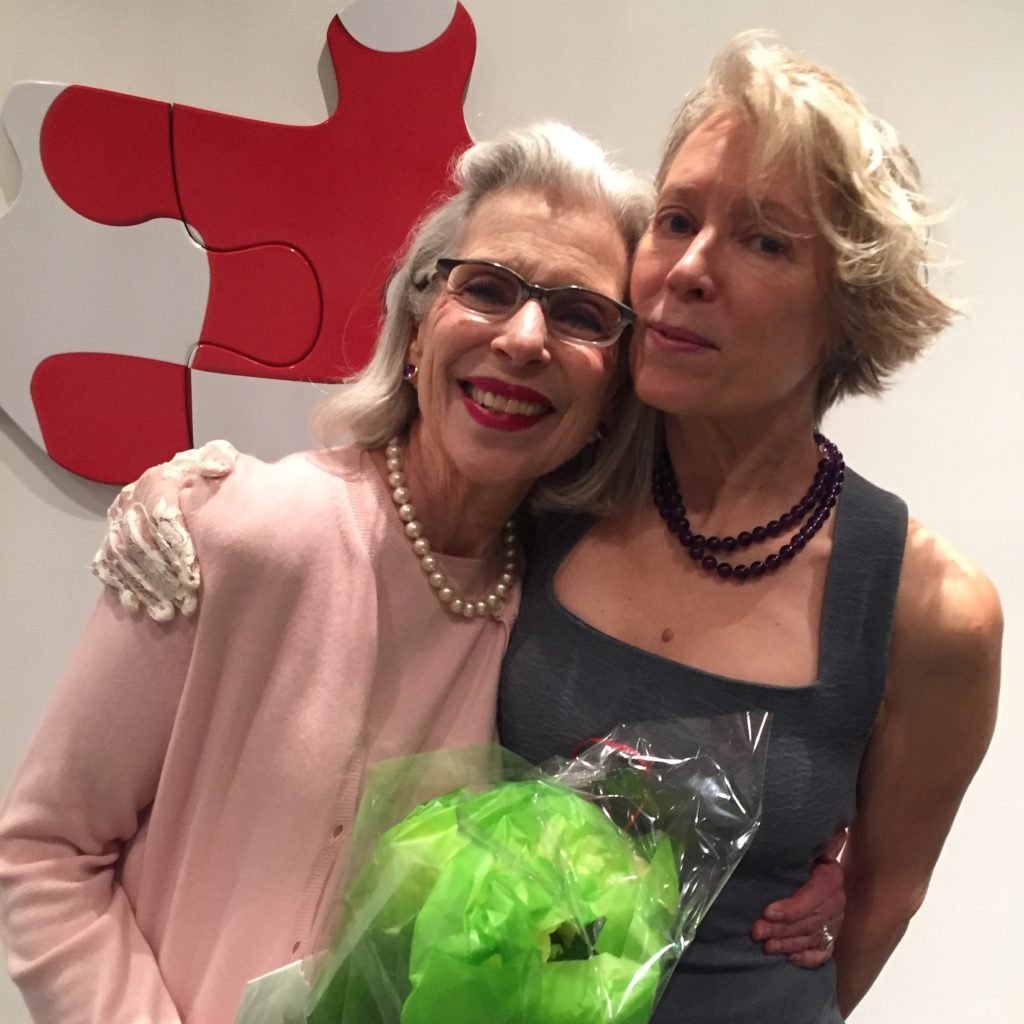
Sandra Gering and artist Dove Bradshaw, November 2015. Courtesy of Sandra Gering Inc.
Today, Gering continues to sells art, working out of her Upper East Side home. The gallery, still technically in operation, has become an online platform for periodic digital exhibitions and other experiments.
The digital sphere is not unfamiliar to the venerable dealer. In fact, she was one of the first gallery owners to embrace the internet as both a business asset and instrument for art making. In 1995, she enlisted artist John F. Simon Jr. to create an online project space, which hosted a group of digital exhibitions under the gallery’s name. The model was both well ahead of its time and ironically similar to what she’s doing today.
Gering first became interested in the potential of the digital just a few years earlier, in 1993. She hosted an event in which the plastic surgery of French performance artist Orlan was broadcast live, via satellite, onto a TV mounted in the gallery. The event not only brought a great deal of media attention (Connie Chung reported from the scene for CNN), it also reached thousands of people around the world via live streams.
“When I saw that, I thought to myself, ‘Why am I sitting behind a desk waiting for people to come in when I can reach the world?’” she recalls. “That planted a seed for me.”
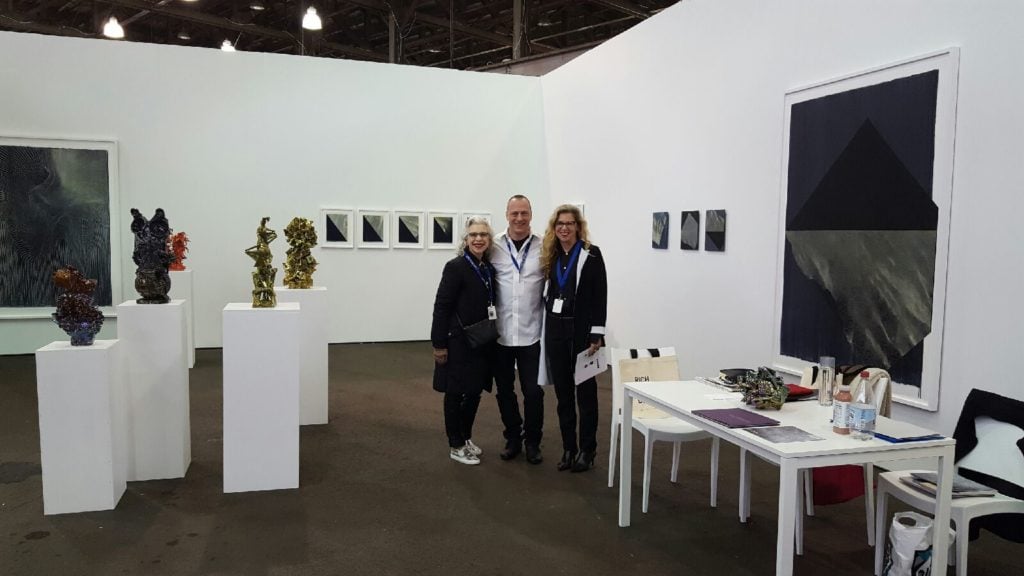
Sandra Gering, Russell Calabrese, and Laura Bloom in San Francisco, 2017. Courtesy of Sandra Gering Inc.
That steadfast belief in the power of connecting with people has defined Gering’s career.
“For me, it’s about love—universal love,” she says. “I believe that art is a communication between souls. Just as Duchamp said: an artwork is not complete until the viewer views it.”